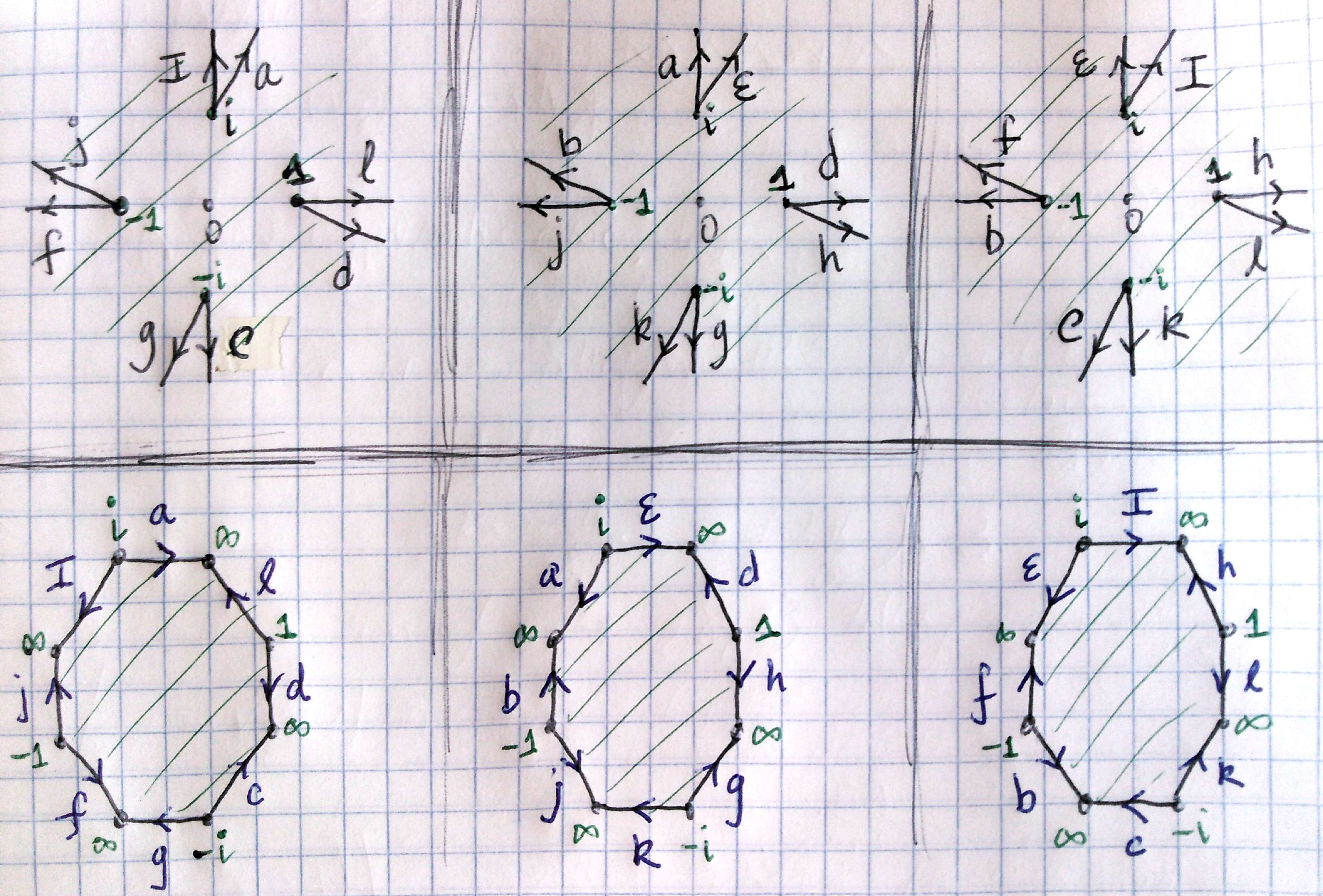I am attempting to calculate the period matrix of the Riemann surface associated to the zero set of a complex curve: $y^3 = x^4 -1$.
Background:
It is my understanding that the period matrix of a Riemann surface is defined as $\int_{\gamma_i} \omega_j$, where $\omega_1, ..., \omega_g$ are a choice of basis of the invariant differentials of the surface, and $\gamma_1, ..., \gamma_{2g}$ are a choice of basis for $H_1(S)$. I have calculated an invariant differential basis as $dx/y, dx/y^2, xdx/y^2$.
To compute the period matrix, I am struggling mightily to actually write down the line integrals necessary.
Q1. How can I write down these line integrals? How can I view the generators of $H_1(S)$ as living on $\mathbb{C}$?
Toward coordinatizing $S$, I have a presentation of $S$ as 3 sheeted cover of $S^2$.

However, naively gluing these octagons together gives me no insight on how to visualize the $\gamma_i$ as loops on these octagons, much less write the necessary associated line integral.
In attempting to understand how to write $\gamma_i$ as line integrals on these octagons, it seems that I must understand how to tile a 3-torus with octagons (since every gluing of my octagons I seem to try gives me a horribly embedded 3-torus).
So, I am attempting to mimic Klein's tiling of $x^3y + y^3z + z^3x = 0$ by heptagons in order to get a tiling of a 3-torus by octagons. In other words, finding a part of the {8, 3} hyperbolic plane tiling which glues together to give a 3-torus.
In conclusion, I restate the same question:
Q2. How can I understand the loops that form a basis of $H_1(S)$ as loops on the {8, 3} tiling? What part of the {8, 3} tiling forms a 3-holed torus?
